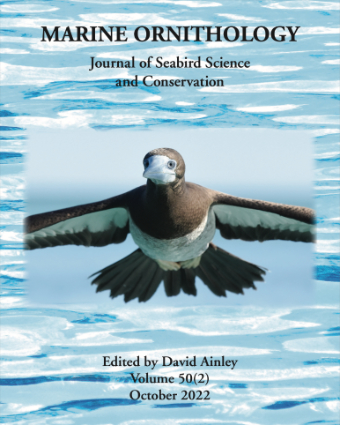Volume 50, No. 2

Volumes > 38 (2010-->)
- Volume 53, No. 2, 2025
- Volume 53, No. 1, 2025
- Volume 52, No. 2, 2024
- Volume 52, No. 1, 2024
- Volume 51, No. 2, 2023
- Volume 51, No. 1, 2023
- Volume 50, No. 2, 2022
- Volume 50, No. 1, 2022
- Volume 49, No. 2, 2021
- Volume 49, No. 1, 2021
- Volume 48, No. 2, 2020
- Volume 48, No. 1, 2020
- Volume 47, No. 2, 2019
- Volume 47, No. 1, 2019
- Volume 46, No. 2, 2018
- Volume 46, No. 1, 2018
- Volume 45, No. 2, 2017
- Volume 45, No. 1, 2017
- Volume 44, No. 2, 2016
- Volume 44, No. 1, 2016
- Volume 43, No. 2, 2015
- Volume 43, No. 1, 2015
- Volume 42, No. 2, 2014
- Volume 42, No. 1, 2014
- Volume 41, No. 2, 2013
- Volume 41, No. 1, 2013
- Volume 41, Special Issue, 2013
- Volume 40, No. 2, 2012
- Volume 40, No. 1, 2012
- Volume 39, No. 2, 2011
- Volume 39, No. 1, 2011
- Volume 38, No. 2, 2010
- Volume 38, No. 1, 2010
Volumes 28-37 (2000-09)
- Volume 37, No. 3, 2009
- Volume 37, No. 2, 2009
- Volume 37, No. 1, 2009
- Volume 36, No. 2, 2008
- Volume 36, No. 1, 2008
- Volume 35, No. 2, 2007
- Volume 35, No. 1, 2007
- Volume 34, No. 2, 2006
- Volume 34, No. 1, 2006
- Volume 33, No. 2, 2005
- Volume 33, No. 1, 2005
- Volume 32, No. 2, 2004
- Volume 32, No. 1, 2004
- Volume 31, No. 2, 2003
- Volume 31, No. 1, 2003
- Volume 30, No. 2, 2002
- Volume 30, No. 1, 2002
- Volume 29, No. 2, 2001
- Volume 29, No. 1, 2001
- Volume 28, No. 2, 2000
- Volume 28, No. 1, 2000
Volumes 18-27 (1990-99)
- Volume 27, No. 1 & 2, 1999
- Volume 26, No. 1 & 2, 1998
- Volume 24, No. 1 & 2, 1996
- Volume 25, No. 1 & 2, 1997
- Volume 23, No. 2, 1995
- Volume 23, No. 1, 1995
- Volume 22, No. 2, 1994
- Volume 22, No. 1, 1994
- Volume 21, No. 1 & 2, 1993
- Volume 20, No. 1 & 2, 1992
- Volume 19, No. 1, 1991
- Volume 18, No. 1 & 2, 1990
Volumes 5-17 (1978-89) a.k.a 'Cormorant'
- Volume 17, No. 1 & 2, 1989
- Volume 16, No. 1, 1988
- Volume 16, No. 2, 1988
- Volume 15, No. 1 & 2, 1987
- Volume 14, No. 1 & 2, 1987
- Volume 13, No. 2, 1986
- Volume 13, No. 1, 1986
- Volume 12, No. 2, 1985
- Volume 12, No. 1, 1985
- Volume 11, No. 1 & 2, 1984
- Volume 10, No. 2, 1983
- Volume 10, No. 1, 1983
- Volume 9, No. 2, 1982
- Volume 9, No. 1, 1982
- Volume 8, No. 2, 1981
- Volume 8, No. 1, 1981
- Volume 7, 1980
- Volume 5, 1978
Search by author or title:
Successful breeding by Black-legged Kittiwakes Rissa tridactyla at the only colony along Canada's Pacific coast
Citation
HART, K.A., WRIGHT, K.G., PATTISON, V. & HIPFNER, J.M. (2022). Successful breeding by Black-legged Kittiwakes Rissa tridactyla at the only colony along Canada's Pacific coast
Marine Ornithology, 50(2),
115-117.
http://doi.org/10.5038/2074-1235.50.2.1476
Received 25 January 2022, accepted 03 February 2022
Date Published: 2022/10/15
Date Online: 2022/07/22
Key words: British Columbia, Black-legged Kittiwake, Rissa tridactyla, fledgling
Abstract
The Black-legged Kittiwake Rissa tridactyla is a widely distributed and well-studied northern hemisphere seabird. Authoritative publications document the existence of breeding colonies in Canada's Arctic and Atlantic regions but not in the Pacific region. We visited the small (ca. 50 pairs in recent years) kittiwake breeding colony at Holland Rock, British Columbia, in July and August 2021, and documented what we believe to be the first record of successful breeding at this site. Previous records have documented successful breeding no further south than 58° latitude in Alaska, ~600 km to the north, making Holland Rock the southernmost colony in the eastern Pacific.
References
CAFF (CONSERVATION OF ARCTIC FLORA AND FAUNA). 2020. International Black-legged Kittiwake Conservation Strategy and Action Plan. Akureyri, Iceland: Circumpolar Seabird Expert Group, CAFF.
COULSON, J.C. & THOMAS, C.S. 1985. Changes in the biology of the Kittiwake Rissa tridactyla: A 31-year study of a breeding colony. Journal of Animal Ecology 54: 9-26.
GILL, V.A. & HATCH, S.A. 2002. Components of productivity in Black-legged Kittiwakes Rissa tridactyla: response to supplemental feeding. Journal of Avian Biology 33: 113-126.
HATCH, S.A., BYRD, G.V., IRONS, D.B. & HUNT, G.L., JR. 1993. Status and ecology of kittiwakes (Rissa tridactyla and R. brevirostris) in the North Pacific. International Symposium of the Pacific Seabird Group, Canadian Wildlife Service, and the British Columbia Ministry of Environment, Lands and Parks. Ottawa, Canada: Canadian Wildlife Service. 14 pp.
HATCH, S.A., ROBERTSON, G.J. & BAIRD, P.H. 2020. Black-legged Kittiwake (Rissa tridactyla), version 1.0. In: BILLERMAN, S.M. (Ed.) Birds of the World. Ithaca, USA: Cornell Lab of Ornithology.
HÁTÚN, H., OLSEN, B. & PACARIZ, S. 2017. The dynamics of the North Atlantic subpolar gyre introduces predictability to the breeding success of kittiwakes. Frontiers in Marine Science 4: 123. doi:10.3389/fmars.2017.00123
HEARNE, M.E. 2015. Black-legged Kittiwake. In: DAVIDSON, P.J.A., CANNINGS, R.J., COUTURIER, A.R., LEPAGE, D. & DI CORRADO, C.M. (Eds.) The Atlas of the Breeding Birds of British Columbia, 2008-2012. Delta, Canada: Bird Studies Canada.
RODWAY, M.S., CAMPBELL, R.W., & LEMON, M.J.F. 2016. Seabird Colonies of British Columbia: A Century of Changes. Wildlife Afield 13: 1-298.
VIHTAKARI, M., WELCKER, J., MOE, B. ET AL. 2018. Black-legged Kittiwakes as messengers of Atlantification in the Arctic. Scientific Reports 8: 1178. doi:10.1038/s41598-017-19118-8